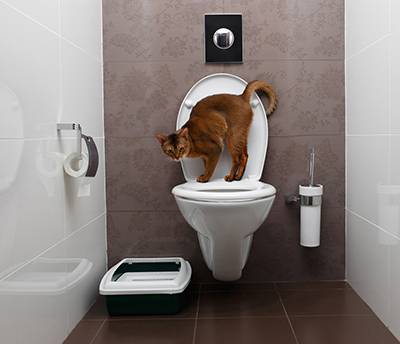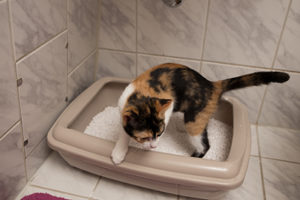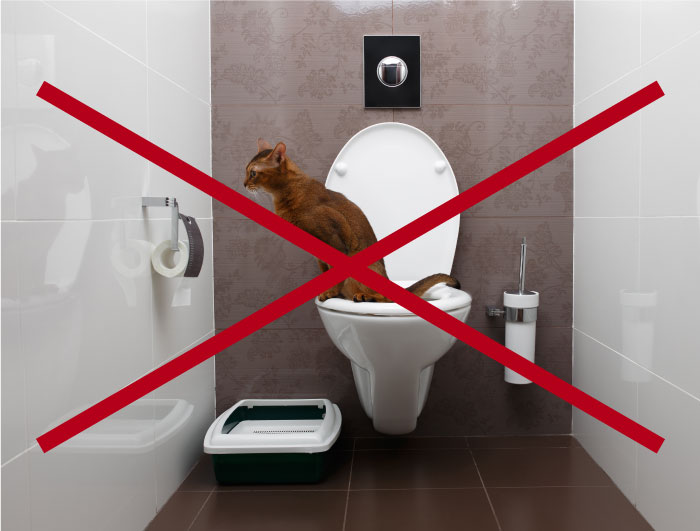Teaching the behavior causes more problems than it solves.

©seregraff/Adobe Stock
In “Meet the Parents,” Robert DeNiro’s character owns a cat named Jinx that has a unique talent: The cat uses the toilet instead of the litterbox. At first thought, the idea of your cat using the toilet instead the litterbox may have great appeal. Who wouldn’t like to avoid scooping the litterbox.
However, the majority of cat behavior experts agree that cats should not be toilet trained. It’s worth noting that in the aforementioned movie, the cat did not really pee into a toilet. Jinx was actually played by two 5-year-old Himalayans, Bailey and Misha. In the two scenes in the movie where Jinx uses the toilet, both cat actors were trained to sit and stay on an empty commode.
Besides taking a considerable amount of time and effort on your part, training your cat to use a toilet instead of a litterbox turns her simple act of eliminating into an anxiety-filled event. It prevents your cat from following her natural instinct to dig, eliminate and then bury her waste—she cannot do that on a toilet seat.
Your cat also cannot “mark” her territory on a toilet. Even a well-cleaned litterbox retains scents that cats can detect but humans cannot. When these scents are flushed away, your cat might become insecure in her territory and could begin to urinate in inappropriate locations.

©ajlatan/Adobe Stock
In addition, adult cats (you cannot toilet train kittens as they are too small) typically resist changes to their normal routine. A cat who has used a litterbox for several years will most likely become stressed when introduced to toilet training, which could also result in elimination accidents.
Another thing to consider is that is your cat will need to balance on the edge of the toilet during training and for regular use. This can be difficult especially if she is older, very young or suffering from illness or in pain. If your cat should slip and fall in, she will most likely reject the toilet altogether and begin eliminating elsewhere in your home.
One of the biggest cons to toilet training a cat noted by the majority of animal experts involves changes in a cat’s waste. Such changes typically indicate health problems or issues. If your cat begins eliminating in the toilet, you will not be able to see changes in her type or frequency of output, which will affect your ability to catch health issues early on. This can drastically effect treatment options and prognoses—sometimes at great cost to your cat’s health and/or your finances.
Toilet training a cat is not recommended and really should not be done.
About the Author: Stacy N. Hackett is an award-winning writer with more than 25 years’ experience in the pet industry. She is the former editor of Pet Product News and a former staff editor with Cat Fancy, Cats USA, Critters USA and Ferrets USA. To learn more about her work, visit stacynhackett.vpweb.com.





